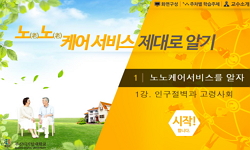Introduction Suicide among the elderly is a public health concern, as life expectancy is increasing rapidly and suicide rates increase with age. In Korea, self-poisoning is the most common method of attempted suicide. This study aimed to evaluate the ...
http://chineseinput.net/에서 pinyin(병음)방식으로 중국어를 변환할 수 있습니다.
변환된 중국어를 복사하여 사용하시면 됩니다.
- 中文 을 입력하시려면 zhongwen을 입력하시고 space를누르시면됩니다.
- 北京 을 입력하시려면 beijing을 입력하시고 space를 누르시면 됩니다.
The Characteristics of Elderly Individuals Who Attempted Suicide by Poisoning: a Nationwide Cross-sectional Study in Korea = The Characteristics of Elderly Individuals Who Attempted Suicide by Poisoning: a Nationwide Cross-sectional Study in Korea
한글로보기https://www.riss.kr/link?id=A107174900
- 저자
- 발행기관
- 학술지명
- 권호사항
-
발행연도
2020
-
작성언어
-
-
주제어
Suicide ; Elderly ; Poisoning ; Risk factors
-
KDC
500
-
자료형태
학술저널
-
수록면
23-23(1쪽)
- 제공처
-
0
상세조회 -
0
다운로드
부가정보
다국어 초록 (Multilingual Abstract)
Suicide among the elderly is a public health concern, as life expectancy is increasing rapidly and suicide rates increase with age. In Korea, self-poisoning is the most common method of attempted suicide. This study aimed to evaluate the characteristics of attempted suicide by self-poisoning among the elderly and to identify risk factors related to the suicide attempts.
Material & Method
A cross-sectional observational study was conducted using the Emergency Department-based Injury In-depth Surveillance database in Korea. We included all adult patients visiting the emergency department (ED) who attempted suicide by poisoning between January 2011 and December 2017 and stratified according to age: the elderly (≥ 65 years old) and the younger group. Characteristics and risk factors for attempted suicide by poisoning among the elderly were evaluated using stepwise regression analysis.
Result
Among 25,904 adult patients, 5,164 (19.9%) were classified as elderly. The elderly were more likely to be admitted to hospital and intensive care units, the average ED length of stay was longer, and total mortality was higher than that of the younger group. Male sex, low socioeconomic status, poor physical health, pesticide use, lower alcohol consumption, and fewer prior suicide attempts were found to be risk factors for suicide among the elderly.
Conclusion
Self-poisoning among the elderly is associated with poorer clinical outcomes than in younger adult patients. Suicide among the elderly is a potentially preventable public health problem, and with proper identification of the associated risk factors, appropriate multidisciplinary intervention strategies can be implemented.
Introduction
Suicide among the elderly is a public health concern, as life expectancy is increasing rapidly and suicide rates increase with age. In Korea, self-poisoning is the most common method of attempted suicide. This study aimed to evaluate the characteristics of attempted suicide by self-poisoning among the elderly and to identify risk factors related to the suicide attempts.
Material & Method
A cross-sectional observational study was conducted using the Emergency Department-based Injury In-depth Surveillance database in Korea. We included all adult patients visiting the emergency department (ED) who attempted suicide by poisoning between January 2011 and December 2017 and stratified according to age: the elderly (≥ 65 years old) and the younger group. Characteristics and risk factors for attempted suicide by poisoning among the elderly were evaluated using stepwise regression analysis.
Result
Among 25,904 adult patients, 5,164 (19.9%) were classified as elderly. The elderly were more likely to be admitted to hospital and intensive care units, the average ED length of stay was longer, and total mortality was higher than that of the younger group. Male sex, low socioeconomic status, poor physical health, pesticide use, lower alcohol consumption, and fewer prior suicide attempts were found to be risk factors for suicide among the elderly.
Conclusion
Self-poisoning among the elderly is associated with poorer clinical outcomes than in younger adult patients. Suicide among the elderly is a potentially preventable public health problem, and with proper identification of the associated risk factors, appropriate multidisciplinary intervention strategies can be implemented.
동일학술지(권/호) 다른 논문
-
Experience of evidence review for 2020 ILCOR CoSTR
- 대한응급의학회
- 정성필
- 2020
-
Update process of the Korean guideline for CPR and ECC
- 대한응급의학회
- 황성오
- 2020
-
- 대한응급의학회
- 이하니
- 2020
-
Machine Learning-Based Prediction of Critical Illness in Children Visiting the Emergency Department
- 대한응급의학회
- 황소연
- 2020





 KISS
KISS






